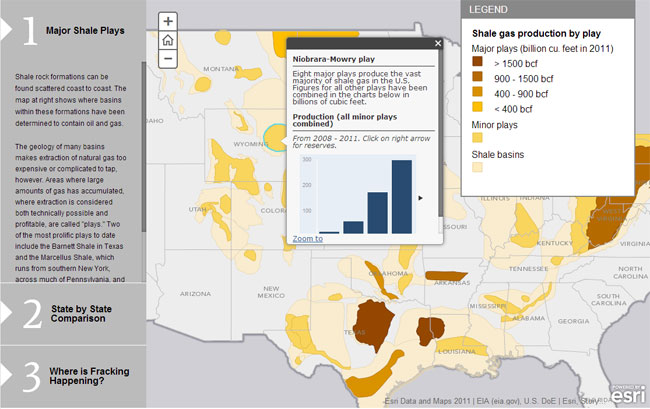Hydraulic fracturing, or fracking, is transforming communities across the US above shale rock layers that trap natural gas and oil. Fracking involves the injection of millions of gallons of water and other fluids into shale deposits under high pressure, causing fracturing of the surrounding rock and the release of gas through nearby wells. The extraction technique is controversial, and the resulting changes to nearby communities are argued as both good and bad.
In a recent story map, Smithsonian.com takes a more detailed look at the shale gas boom. The story map depicts where shale gas deposits are found, provides a comparison of fracking activities by state, and a delivers details of where fracking is happening today and where wells can be found.

Zooming in on the third map provides detailed information about wells and their locations.

Smithsonian.com created the application using an Esri story map, specifically the Storytelling Side Accordion template which can found and downloaded from ArcGIS Online. This template is ideal for comparing several different maps and has been used in the Worldwide Renewable Energy and STEM Education story maps.
For more information see Esri Storytelling with Maps.
insider